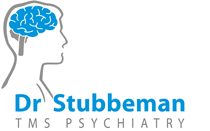
A Brain Therapy Changed My Life
John Elder Robison, Spectator Health | July 6, 2016
Copyright© 2015 The Spectator (1828) Ltd – All rights reserved
ranscranial magnetic stimulation’ — it sounds like something a nutty professor would develop in a science fiction movie. Yet this batty-sounding treatment changed my life in a profound way.
I am grateful for what it did for me. As someone with autism I found it difficult to connect to other people until TMS turned my world upside down, giving me a newfound sensitivity that changed all my relationships. Its effects went far beyond the hopes of the scientists. But this, I think, is just a taste of what TMS will do for people in future.
Before the TMS experiments all my accomplishments were solitary. I designed circuits and devices, took photos, and wrote stories. Today, my accomplishments also involve group activities. I serve on autism committees, teach in colleges, and engage the public in workshops. That change in my social ability is striking, at least to me.
Initially the adjustment was painful. I had to re-evaluate my old life. But, five years later, I feel changed for the better. I wanted to connect with people more easily and that has, for the most part, come true.
I will get on to what TMS is later. First I want to explain the revolution in neuroscience that makes such an intervention possible.
The human brain is filled with 87 billion neurons. What goes on between them has been one of the great mysteries of medicine. For many years our knowledge of brain function came from the study of brains from deceased people with brain injuries. Only now are we able to look into the brains of living, conscious people.
This revolution started with high-resolution brain imaging. The past 30 years have seen the development of scanners that can pinpoint activity as we perform tasks. The most sophisticated systems of today can see with impressive precision — they break the brain down into 50,000 tiny cubes called voxels. Each voxel is somewhat smaller than the rubber on the end of a pencil. We can’t see activity at the cellular level (yet) but imaging systems are getting better every year.
Neuroscientists are able to use this technology to look at a typical person’s brain as he or she does a task, and compare patterns of brain activity with those of a disabled person. For the first time, we are beginning to see what is different in the brain, and correlate what we see with exceptionalities or disabilities in real time.
The question now is: what do we do about observed differences?
Scientists have had some success developing cognitive exercises that activate and strengthen certain areas of the brain — an example of how science can supercharge traditional teaching methods. But what happens when that isn’t enough?
That’s where active interventions like brain stimulation come in. Once we identify differences in small areas of the brain, we can use techniques like TMS to enhance or inhibit those areas. If the scan shows an area is too active we can ‘turn it down’. If it’s not active enough, we can ‘turn it up’. It’s not quite as simple as that, but you get the general idea.
TMS is a technique that uses high-powered magnetic fields — similar to those in an MRI but more concentrated — to induce electrical currents in small areas of the brain’s outer surface. It is delivered by holding a fist-sized coil against the scalp and pulsing it with energy that passes invisibly through the scalp and skull and into the brain. The TMS energy is able to directly affect the circuitry in our heads, and its focused nature means the risk of side effects is reduced when compared to drugs.
Prior to TMS, the most common way to change the brain was through medication, which went everywhere, not just where it was needed. When heavy doses were required the side effects were often just as disabling as the original problem. As a targeted therapy, TMS does not have that disadvantage. Current TMS systems can target areas the size of a marble, and the technology could be developed for an even tighter focus.
This is important, because humans are living longer, and the longer we last, the more likely we are to develop disorders of the brain, and the greater our need will be to treat what was formerly accepted at the end stages of life.
Right now neuroscientists are using TMS and other forms of brain stimulation to target many conditions that have been untreatable, or treated with minimal success. For example, one new TMS therapy may suppress epileptic seizures before they begin — a potential lifesaver. Other therapies may slow ageing, or reduce the effects of Parkinson’s and other degenerative diseases.
For depression, TMS is already approved and is used widely, and patients are reporting effects as striking as my own.
That’s the treatment side. What about brain enhancement?
